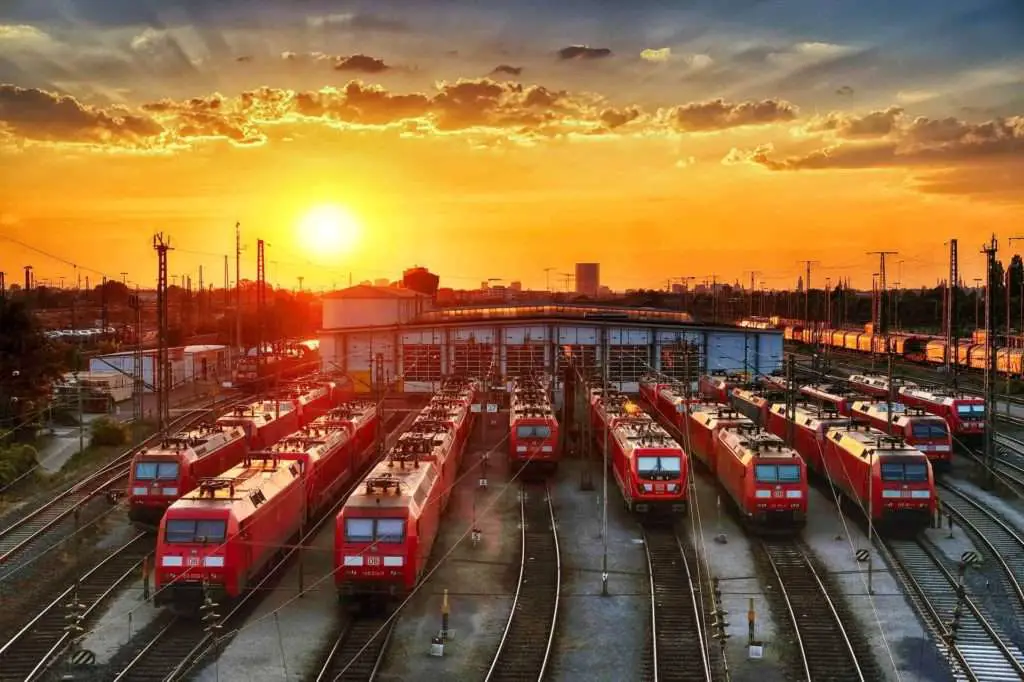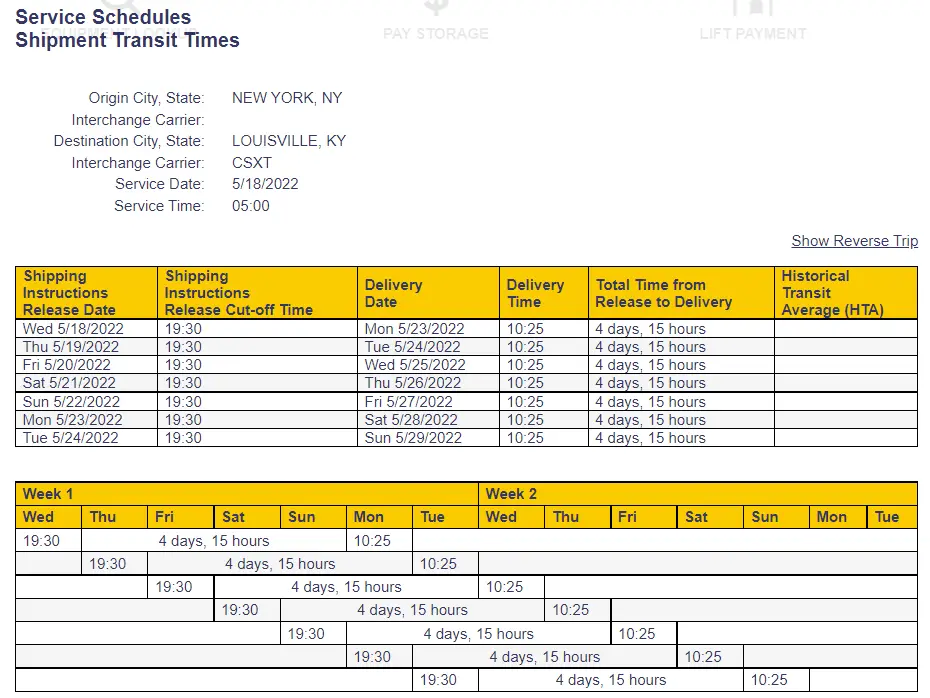
#1 How much freight moved by train
According to UP.com that approximately 28% of the total U.S. freight is moved by train. Each year freight rail haul around 1.7 million tons of goods ( based on aar.org).
aar.org also pointed out that It would need 99 million additional trucks to transport goods if America freight rail did not move freight.
#2 What freight can a freight train haul?
Most of the time freight trains haul bulk commodities. Freight train also hauls shipping containers and home goods etc.
Common bulk commodities that freight train hauls:
- Coal
- Lumber
- Steel
- Stone
- Sand and gravel
- Chemicals
- Motor vehicles and parts
- Food products
- Grain and other farm products
#3 How many freight train routes are in the U.S.?
Based on the Department of transportation the American rail has nearly 140,000 route miles. which includes 7 class I railroads, 22 regional railroads, and 584 local (shortline) railroads.
Below are 7 class I railroads
- BNSF Railway Co.,
- Canadian National Railway
- Canadian Pacific
- CSX Transportation
- Kansas City Southern Railway Co
- Norfolk Southern
- Union Pacific Railroad Co
#4 Speed of freight train
The speed limit of freight trains varies greatly on the track that has been used, and the types of railroad cars (cargos) hauled. In general majority of freight trains travel at a speed between 25mph~50mph.
A freight train can be fast if the track is straight and signaled. The speed can go up to 70 mph if the freight train goes on an autorack and carries standard boxcars. If the train carries hazardous material and has a curve or bridge on the track, the speed limit is between 10 mph to 25 mph.
#5 Can freight train stop?
A freight train has a regular stop and an emergency stop brake, so freight train can stop.
A freight train can not stop immediately after applying the brake. Minnesota Safety council indicated the stopping distance for an average freight train is about 1 to 1-1/4 miles in length. When a freight train travels at 55mph, it can take 1 to 1.25 miles to a full stop.
#6 Can freight train go uphill or downhill
Freight trains go uphill and downhill all the time. They can not go straight but in a zig-zag way to fight gravity.
When a freight train is on a flat track the rolling resistance and air resistance are minor, so a little power can pull a heavy load.
More power is needed when freight trains go uphill because the train needs to fight rolling resistance, air resistance, and gravity. The heavier the freight is the more horsepower needed to climb the hill. If the train engine is not strong enough to haul the entire railcars, it will pull half of the cargo the first time and come back to pull the rest.
There is limited traction with steel wheels on a steel track, so the freight train needs a very good brake system such as dynamic brakes when going downhill.
#7 how many freight can a freight train load/pull?
The maximum freight a train can pull depend on track condition and locomotive capacity. According to the association of the American railroad (aar.org) In 2020, the average freight train carried 3,817 tons.
On average one freight train can haul 120 railcars. One railcar can load two 40-foot containers. One freight train with 120 railcars can haul 400 containers. if it is double-stack then 800 containers.
#8 Are freight trains electric or diesel
Most freight trains are diesel engines or you can say diesel-electric powered. Union pacific company explained why we call the freight train disel-electric because the diesel engine drives an alternator, which produces electricity to run electric motors mounted on the locomotive’s axles (up.com).
Based on association of american railroads(aar.org) that U.S. Railroad on average move 1 ton of freight 480 miles on 1 gallon of fuel.
#9 Are freight trains loud?
Freight trains are loud. Freight train noise is created by different parts of the train. Train engine, traction between wheels and track, brakes, and horns all create substantial noise.
Under the Federal Train Horn Rule, locomotive engineers must sound train horns at all public grade crossings (railroads.dot.gov). Freight train honks loud at night because it can not see.
#10 Do freight trains have bathrooms?
Freight trains do have bathrooms .Freight trains have limited amenities most times only equipped with refrigerator and bathrooms. It is rare to see a sleeping quarter on a freight train.
#11 Do freight trains run on a schedule
Freight trains run every day, including weekends and holidays. Freight trains also run on schedule. You can go to the train company’s website to get the freight trains schedule.
Below screenshot is CSX freight train company’s schedule from New York, NY to Louisville, KY on 5/18

#12 Is the future freight train automated?
It is no doubt that we are going to see more and more automated trains will be put into use. Robots will replace freight train drivers in the future but it is not now. There are still many things we have not figured out.
Tom Cassauwers wrote on www.equaltimes.org that full automation train can be done in a closed system but not on regular trains. Regular trains ride around in all kinds of weather conditions, and circumstances can change every second so the driverless train need very good obstacle detection and a top-notch safety system. Rright now we still can not achieve this goal.
In my personal opinion that freight trains will never become obsolete unless we create better vehicles than trains. Currently, we have air, ocean, and truck transportation systems but the railroad is still the second most important transportation system to move the freight.
The freight train does get longer and longer nowadays, some of them almost reach to 3miles long with 200 cars. The length of the train created problems in the train yard and track. it is not wise to add the length of the train but do not have a matching system to operate. in addition, the longer train takes a long time to cross, creating a potential safety hazard.
Right now most freight trains operate on diesel. I believe with more and more people being conscious of the environment, we are going to see fully electric trains very soon.
Resources
https://www.minnesotasafetycouncil.org
Front Page
https://en.wikipedia.org/wiki/Train_noise
https://www.up.com/aboutup/special_trains/diesel-electric/index.htm
https://www.wsj.com/articles/why-railroads-are-making-freight-trains-longer-and-longer-1529055002
